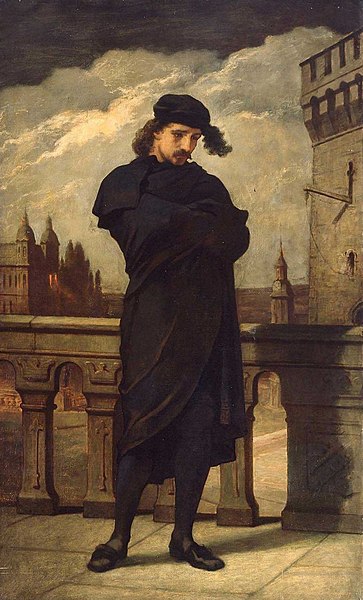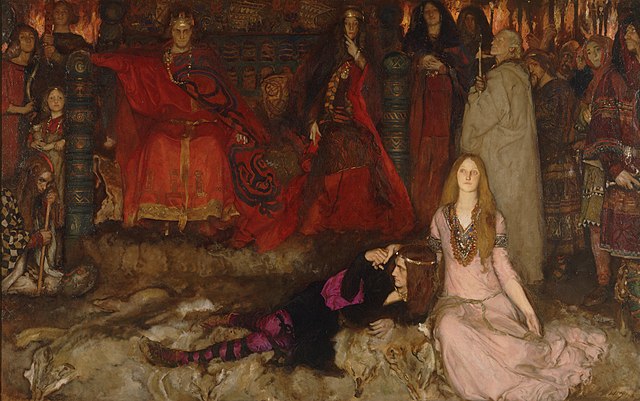Amleth is a figure in a medieval Scandinavian legend, the direct inspiration of the character of Prince Hamlet, the hero of William Shakespeare's tragedy Hamlet, Prince of Denmark. The chief authority for the legend of Amleth is Saxo Grammaticus, who devotes to it parts of the third and fourth books of his Gesta Danorum, completed at the beginning of the 13th century. Saxo's version is supplemented by Latin and vernacular compilations from a much later date. In all versions, prince Amleth (Amblothæ) is the son of Horvendill (Orwendel), king of the Jutes. It has often been assumed that the story is ultimately derived from an Old Icelandic poem, but no such poem has been found; the extant Icelandic versions, known as the Ambales-saga, or Amloda-saga are considerably later than Saxo. Amleth's name is not mentioned in Old-Icelandic regnal lists before Saxo. Only the 15th-century Sagnkrønike from Stockholm may contain some older elements.

Amblett in a 17th-century Danish manuscript illustration
Prince Hamlet is the title character and protagonist of William Shakespeare's tragedy Hamlet (1599–1601). He is the Prince of Denmark, nephew to the usurping Claudius, and son of King Hamlet, the previous King of Denmark. At the beginning of the play, he is conflicted whether, and how, to avenge the murder of his father, and struggles with his own sanity along the way. By the end of the tragedy, Hamlet has caused the deaths of Polonius, Laertes, Claudius, and Rosencrantz and Guildenstern, two acquaintances of his from childhood. He is also indirectly involved in the deaths of his love Ophelia (drowning) and of his mother Gertrude.
Portrait of Hamlet by William Morris Hunt, c. 1864
A statue of Hamlet with Yorick in Stratford-upon-Avon
Hamlet reclines next to Ophelia in Edwin Austin Abbey's The Play Scene in Hamlet (1897)
Marcellus, Horatio, Hamlet, and the Ghost by Henry Fuseli





